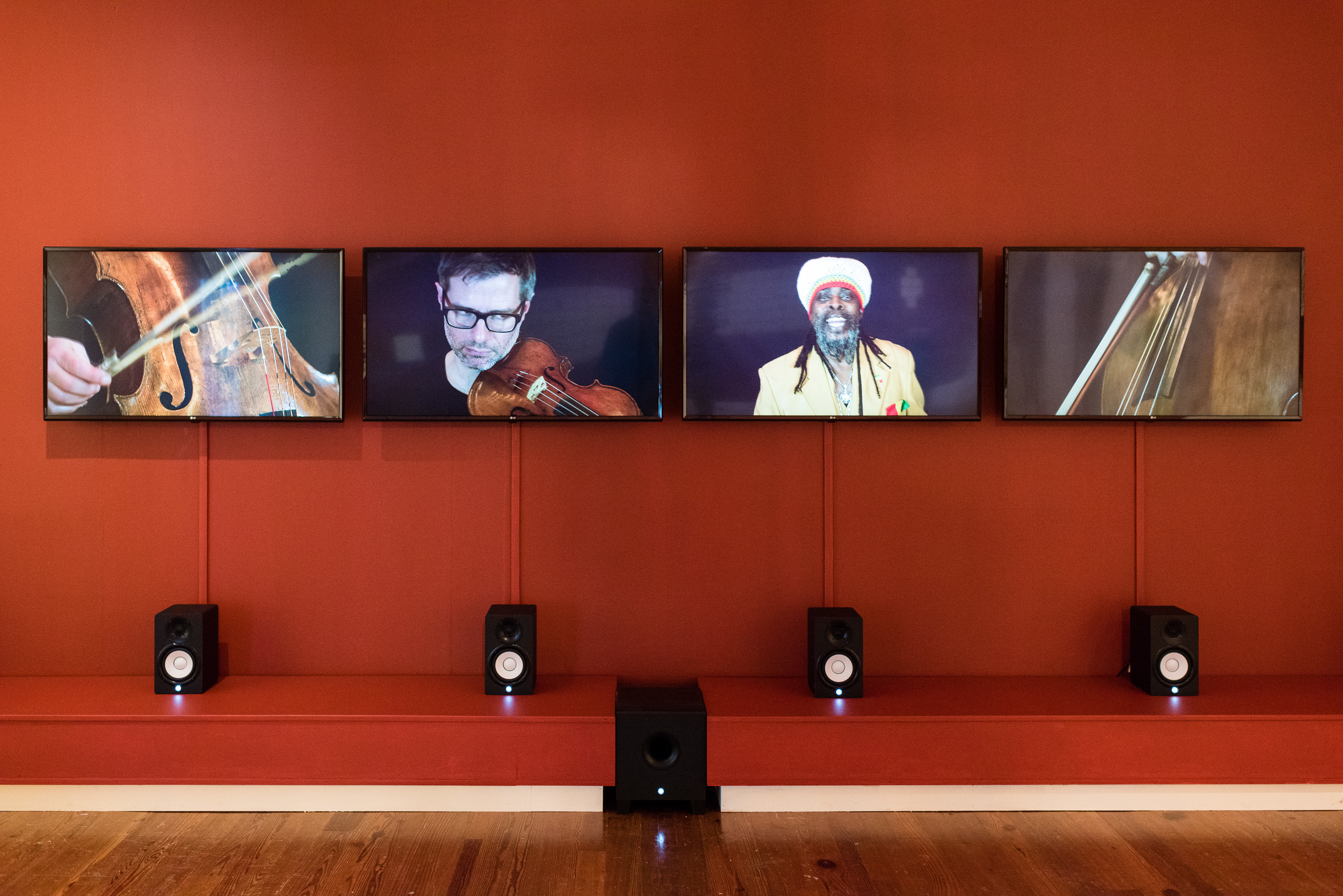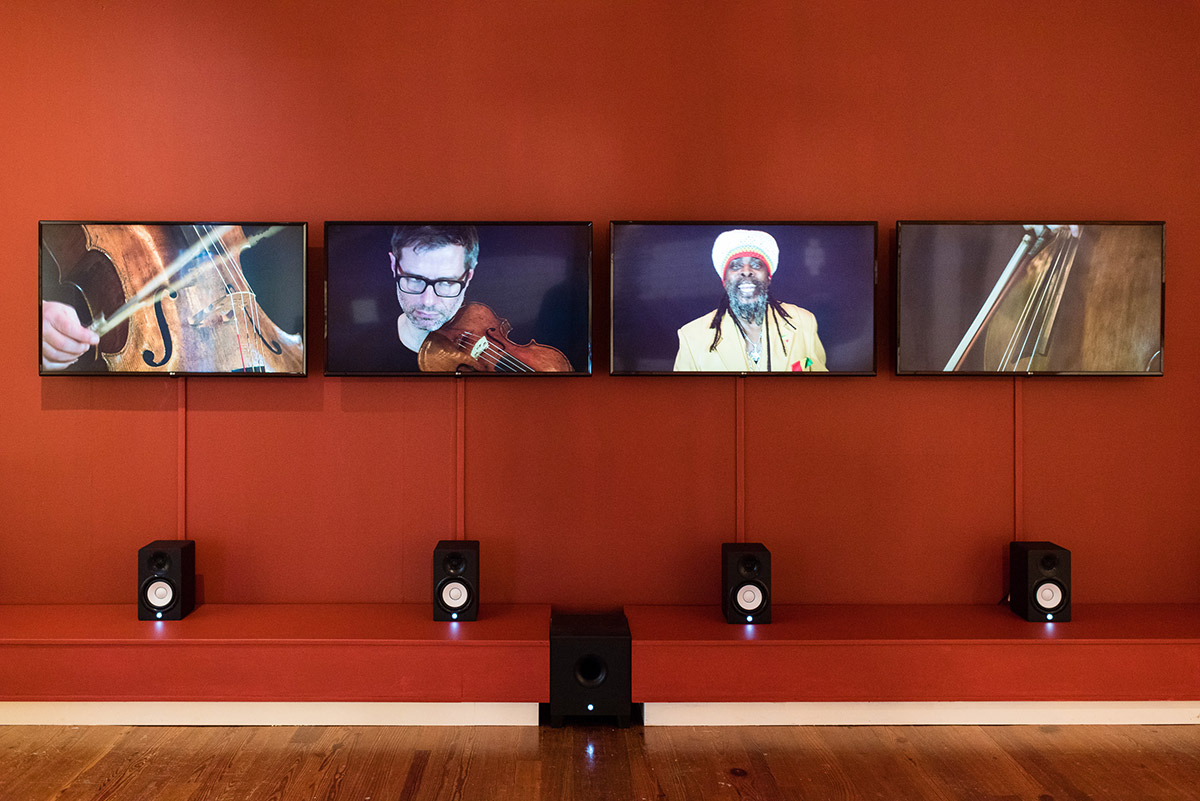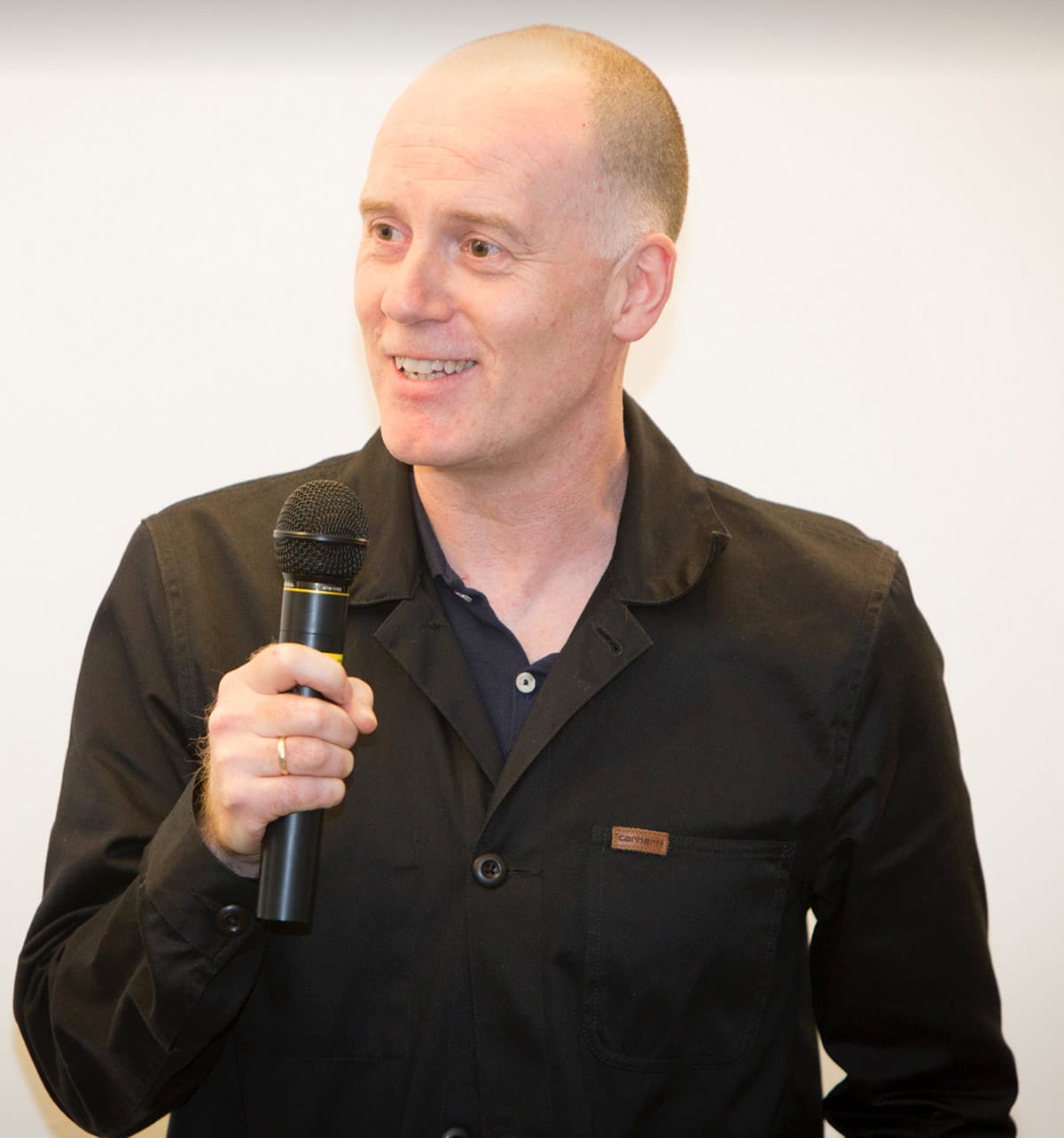
By Natalie Willis
We continue where we left off with Graham Fagen last week on discussing his work, “The Slave’s Lament” (2015) in the collaborative exhibition, “We Suffer To Remain”.

“The Slave’s Lament” (2015), Graham Fagen, 5 channel audio/video installation, dimensions variable. Originally shown at the 2015 Venice Biennale.
Natalie Willis: Where you do situate your voice in the work and in the overall exhibition? In “The Slave’s Lament” do you see yourself in the work, or more as a facilitator?
Graham Fagen: You as the artist, in collaborating with people, start with an aim as to what you think you could achieve, or what you hope you could achieve. When you start the process it needs to allow space and room for other people to offer what they want to bring to the project. I suppose I was directing their influence and then having them step back, and then I would take that influence on to each stage. When I see the work, for me it’s Ghetto Priest’s, the Scottish ensemble’s, it’s lots of other people’s work. And that’s good, I like that as an artist, when what you make belongs to others.
NW: That’s important I think, given the content of the work and the history it speaks to. How much did you learn in school about the slave trade, or how was it framed for you?
GF: In school we learnt nothing.
….
NW: Nothing at all about it?! Not one lesson?
GF: Nothing. At school we were taught that Robert Burns was our Scottish cultural heritage, but away from school I was listening to Jamaican Reggae. Many years after I left school, through my own research, I discovered much more on him that was disconcerting. At school you’re not given The Slave’s Lament as one of Burns’ songs, you’re taught a very particular history of Burns. You’re not taught that he had booked three trips to go to Jamaica on a sugar plantation as an overseer of slaves.
NW: Did you have any hesitations or discomfort investigating this material on slavery in thinking this might not be something for you to speak on, given that you are a white, British man?
GF: I was very aware of the questions that would be raised, especially showing the work publicly, and most especially in the Americas and Caribbean. Of course it’s uncomfortable, but I would’ve felt more uncomfortable knowing this information knowing I had to re-address this so called amnesia that my culture and my country has about this subject area. That would’ve made me feel more uncomfortable than being here and being in conversation about other people’s readings of it.
NW: Some people have taken issue with the portrayal of Ghetto Priest because of historical contexts of the portrayal of Black people that can be read in the work, but this denies him his ability to speak for himself and doesn’t consider his agency and autonomy. What has he expressed to you about the work through the process?
GF: The first thing he said to me was, “my man Robert Burns was born to write that song, and I was born to sing it”. I’ve had lots of conversations with him about some of the tougher questions that get put to me, about the accusation of “putting the words of a white man into a Black man’s mouth” and he just guffaws with laughter. I’m wondering why he’s laughing, and he’ll say “it’s because they don’t understand Graham, it’s beyond the flesh”.
His facebook page has a lot of his own words on the work. He says “When you’re called upon to represent something bigger than yourself, over 800 million souls. #slaveslament #myancestorsneversleep” There’s more but I can’t read it…
NW: That’s genuine, it’s good. You have to be genuine when you’re doing this work, so feeling touched by it or feeling emotional about it is perhaps the only acceptable response really.
GF: You can’t lie. You just can’t.
NW: You can’t… You’ve spoken to this lack of connection to traditional Scottish identity, do you think that your background maybe this gives you a slight sensitivity to this history?
GF: Yeah, I guess it does. Why else would the lyrics of Jamaican Reggae mean so much to kids in a council housing scheme on the West coast of Scotland? Why would they connect so strongly?
NW: It’s a displacement of another sort. Because you’re a Scotsman without a tartan and without a clan. And then you have someone in the work from the African Diaspora, who doesn’t have a connection to their home, to their ancestors, to what is supposed to be their home. These are not the same experience, but the common thread is these experiences of searching for belonging or a lostness.
GF: Yeah and I suppose it’s like finding your place. I was finding my place in the Jamaican Reggae, the punk, the bands we were in, the politics we believed in that came from that. I was finding my place and I was comfortable with what I was finding in that. But formally at school to be taught that your culture is this other thing, with Burns and tartans and clans. So what does that make what I’m learning away from school, is that not mine? Does it belong to somebody else? If it does belong to somebody else does that mean I can’t have access to it?
Being taught who you are based on where you’re from, it’s all based on a cliche, a stereotype, and it’s used for reasons of authority and power. It’s very political. That’s why I’m very political with the current conversations in Scotland around it. People saying “oh yeah, there was no serious academic research into Scottish slave trade because of amnesia”. We need to question this amnesia. It’s institutional amnesia, and it’s institutions in the UK that decide that they won’t teach that in school but that they’ll teach you about other things and other aspects of it.
They’ll teach you about the many places that were part of the British empire but they won’t tell you how they became part of it, how Scotland became part of the British empire to gain access to the slave trade, why we wanted to have an empire in the first place. We’ll just tell you that it’s great to have an empire. No question. There’s never a critical side to it… The bastards.

Scottish artist Graham Fagen.
NW: Agreed! I think what’s showing in this is that anybody who decides to begin to look at things even a tiny bit, you begin to see that it’s completely national propaganda, so how do you begin to deal with that?
GF: For me that’s where it comes back to this cultural identity and how we place ourselves. If we build cultural barriers where only certain people are allowed to be a part of, or talk about, or allowed to address something – then in a sense that’s playing into the hands of institutional powers that want their belief to be dominant, so that a populace will believe in a certain thing in a certain way. Never has that been more true than the populism that’s swept through the western world at the moment with Trump in America and with BREXIT in the UK. That populism is about denying other people their identity, denying other cultures, separating cultures, saying that if you’re one thing you can’t be another and vice versa.
NW: Very problematic for everyone, but particularly for people between identities, displaced….
GF: Very. And that’s what hopefully my work is about, challenging cultural preconceptions and challenging the authority that makes us believe in one thing or another, as well as challenging what we’re told and not told. It’s about the importance of challenging, as individuals, our own cultural preconceptions.
NW: I’ve asked this to everyone, because it’s a very pointed phrase but also so open to the multiplicity of experiences around this exhibition. How do you think “we suffer to remain”?
GF: I think about it as “we” in the collective we, as well as the individual sense of we as in “me”. And maybe the suffering is what I’ve just been talking about, the toughness of realising that a subject area, that I had to deal with as an artist… I don’t want to say that I’ve suffered in any way by dealing with it, but I suppose the way I connect it to the title is that I’m doing it not so that we remain, but so that we can move forward.
The exhibition “We Suffer To Remain”, a collaboration with the British Council, will be on view at the NAGB through July 29th.